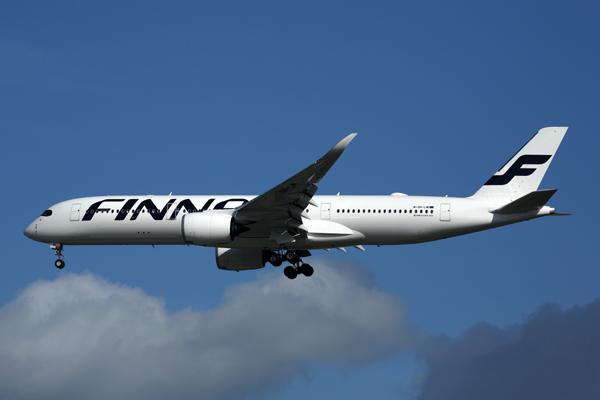
Finnair has outlined a new strategy to build a more geographically balanced network and increase cooperation with partner airlines as it seeks to return to profitability.
The Helsinki-based carrier previously exploited a niche of connecting Europe and Asia via the short northern route, but the closure of Russian airspace due to the war in Ukraine has weakened the viability of such services. Flights to Asian destinations now take 15-40% longer, thereby increasing operational costs and inefficiencies in its long-haul fleet.
In response, Finnair plans to embark on a period of “significant structural renewal” that will involve reshaping its network, reducing the size of its fleet and further strengthening partnerships with other oneworld members.
“The Asia routes had been among the most profitable in our network, but we don’t have the unique geographical advantage anymore,” CEO Topi Manner said during a webcast on Sept. 7. “Russia’s attack on Ukraine really was a game-changer in terms of our strategy.”
Finnair temporarily altered its Europe-Asia connecting strategy during the pandemic in response to travel restrictions—shifting its focus to destinations in North America—but Manner admitted that the war in Ukraine has forced a more permanent change.
He said that the airline would continue to serve major Asian destinations such as Bangkok, Guangzhou and Singapore from Helsinki, as well as adding additional points in India and resuming flights to other Chinese cities once authorities there further relax COVID-19 rules. However, secondary cities in Asia will no longer form part of the carrier’s plans.
Instead, Manner said that the Middle East would become a key part of Finnair’s network, building on a new agreement with Qatar Airways. In August, the Finnish airline announced plans to introduce daily Airbus A330 services from Helsinki (HEL), Stockholm Arlanda (ARN) and Copenhagen (CPH) to Doha (DOH), linking the markets with connecting flights on Qatar Airways. Manner said flights to Doha would also begin from a fourth European destination, which is yet to be announced.
“During the winter we will have 28 weekly flights to Doha alone, on top of a couple more to Dubai,” Manner said. “Thirty weekly flights to the Middle East is more than we had to mainland China before the pandemic. With the help of Qatar Airways, it underscores that the Middle East is becoming a big, big market for us.”
Manner said that Finnair would continue to focus on North America, leveraging the strength of its transatlantic joint venture that includes American Airlines, British Airways and Iberia. But he added that it was unlikely to open direct routes to points in Africa or South America, instead preferring to offer one-stop connections with partner airlines.
From Stockholm Arlanda, Manner confirmed that Finnair will drop long-haul routes to destinations including Los Angeles (LAX) and New York John F Kennedy (JFK) during the winter 2022/23 season and would concentrate on channelling intercontinental traffic through Helsinki.
He said that the long-haul Stockholm routes performed “reasonably well” during summer but were not sufficiently profitable to operate this winter.
Manner said the network changes would contribute to a cost-reduction plan that would be similar in scale to a €200 million ($198 million) program that has already been completed. The latest cuts will also include adjustments in employment terms and route-specific outsourcing of cabin service.
In addition, Finnair expects to shrink the size of its fleet but has not detailed the scale of the planned reduction. According to CAPA Fleet Database, the airline has six A319s, nine A320s, 14 A321s, five A330s and 17 A350-900s currently in operation.
“We will be optimizing and reducing the size of the fleet according to the needs of the network—and one important factor impacting the size of the fleet going forward will be demand,” Manner said.
He added that the reopening of China would play a significant role in the scale of the reduction, although the carrier still expects to fly between 80% and 85% of its pre-pandemic capacity during the fourth quarter of 2022.
